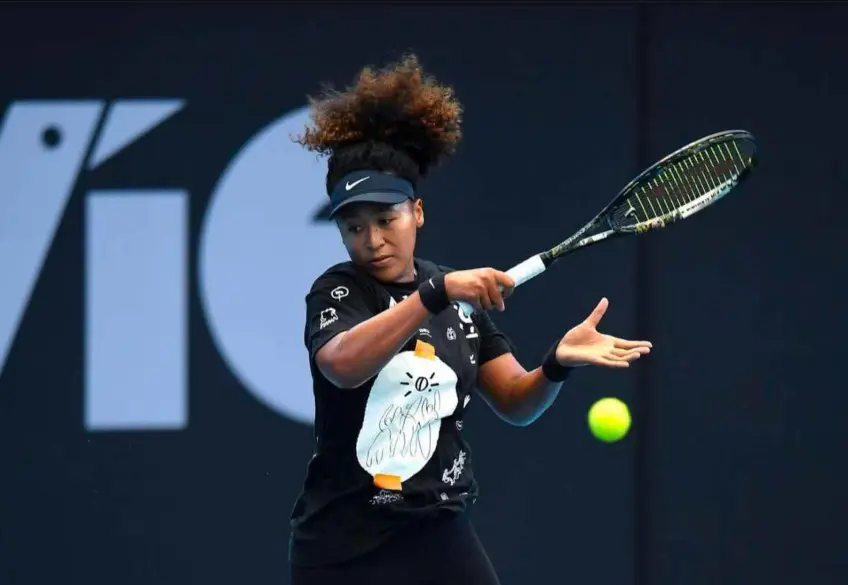
Naomi Osaka is preparing for her much-anticipated return to professional tennis, and all eyes are on her as she steps onto the courts in Auckland. The Japanese star, a four-time Grand Slam champion, has been away from the sport for over a year, taking time off to focus on her mental health and embrace motherhood after the birth of her first child. Now, as she gears up for the 2024 season, the draw at the ASB Classic in Auckland presents a mixture of promising early opportunities and potential challenges in the later rounds, setting the stage for a fascinating comeback.
In the initial stages of the tournament, Osaka is set to face opponents whose rankings and experience appear manageable for a player of her caliber. This favorable opening offers her a chance to ease back into competitive tennis while rediscovering her rhythm and confidence on court. For a player returning from such a significant break, these early matches are critical in establishing momentum and testing the adjustments she has made to her game during her time away.
Osaka’s early-round opponents are unlikely to possess the firepower or tactical depth to cause her significant trouble if she plays anywhere near her best. These matchups could serve as an ideal platform for her to experiment with new strategies and regain her competitive edge. With her renowned serve and powerful groundstrokes, Osaka has the tools to dictate play against lower-ranked opponents, and she will likely aim to fine-tune her timing and shot selection during these encounters.
However, the path to the title in Auckland is far from straightforward. As the tournament progresses, Osaka is likely to face stiffer competition in the later rounds. The field includes several seasoned players and rising stars who are eager to test themselves against a player of Osaka’s stature. These potential matchups will demand not only physical fitness but also mental toughness, as Osaka will need to adapt to higher-caliber opponents capable of exploiting any vulnerabilities in her game.
One of the key challenges for Osaka will be managing expectations. Her return has been met with widespread excitement, and many fans are eager to see her reclaim her spot among the elite in women’s tennis. While the early matches in Auckland may provide her with a relatively gentle reintroduction to the tour, the tougher tests ahead will require her to draw upon her championship mentality. Balancing the external pressures of a high-profile comeback with the internal demands of regaining peak form will be crucial to her success.
Osaka’s preparation for the tournament has reportedly been meticulous. She has worked extensively on rebuilding her fitness and refining her game, ensuring she is as ready as possible to compete at the highest level. The hard courts in Auckland, a surface that has historically suited her aggressive style of play, should complement her strengths. Her ability to dominate with her first serve and dictate rallies with her forehand makes her a formidable opponent on this surface. However, the real test will come when she faces opponents who can match her power and push her out of her comfort zone.
As Osaka progresses deeper into the draw, she may encounter players with contrasting styles that challenge her adaptability. Defensive specialists who excel at counterpunching could force her to extend rallies and test her patience, while aggressive shot-makers might look to disrupt her rhythm with bold tactics. These matchups will require Osaka to rely on her tactical acumen and mental resilience, traits that have been hallmarks of her greatest victories in the past.
Beyond the immediate outcomes in Auckland, the tournament represents a significant step in Osaka’s broader journey back to the top of women’s tennis. Her decision to start her comeback at a smaller event, rather than diving straight into a Grand Slam or a premier tournament, reflects a thoughtful approach to managing her return. By choosing a setting that allows her to ease into competition, she is giving herself the best chance to rebuild her confidence and assess where her game stands relative to the rest of the field.
Osaka’s return also carries immense significance for the sport as a whole. As one of the most recognizable and influential figures in tennis, her presence elevates the profile of any tournament she enters. Her candid discussions about mental health and her openness about the challenges she has faced have resonated with fans worldwide, making her comeback a source of inspiration for many. The way she navigates her return, both on and off the court, will undoubtedly capture the attention of the tennis community and beyond.
Looking ahead, Auckland serves as a crucial stepping stone for Osaka as she builds towards the Australian Open, a tournament where she has enjoyed tremendous success in the past. Her performances in New Zealand will provide valuable insights into her readiness for the intense competition she will face in Melbourne. If she can find her form and gain match fitness in Auckland, she will head into the first Grand Slam of the year with renewed belief in her abilities.
In summary, Naomi Osaka’s journey in Auckland is poised to be a compelling narrative of talent, resilience, and determination. The favorable early matchups offer her a chance to settle into the rhythm of competitive play, but the challenges that await in the later rounds will test her growth and readiness. For Osaka, this tournament is more than just a return to the court—it is a statement of her intent to reclaim her position among the best in the world. As fans eagerly watch her progress, they are witnessing the beginning of a new chapter in the career of one of tennis’s most remarkable athletes.
Leave a Reply